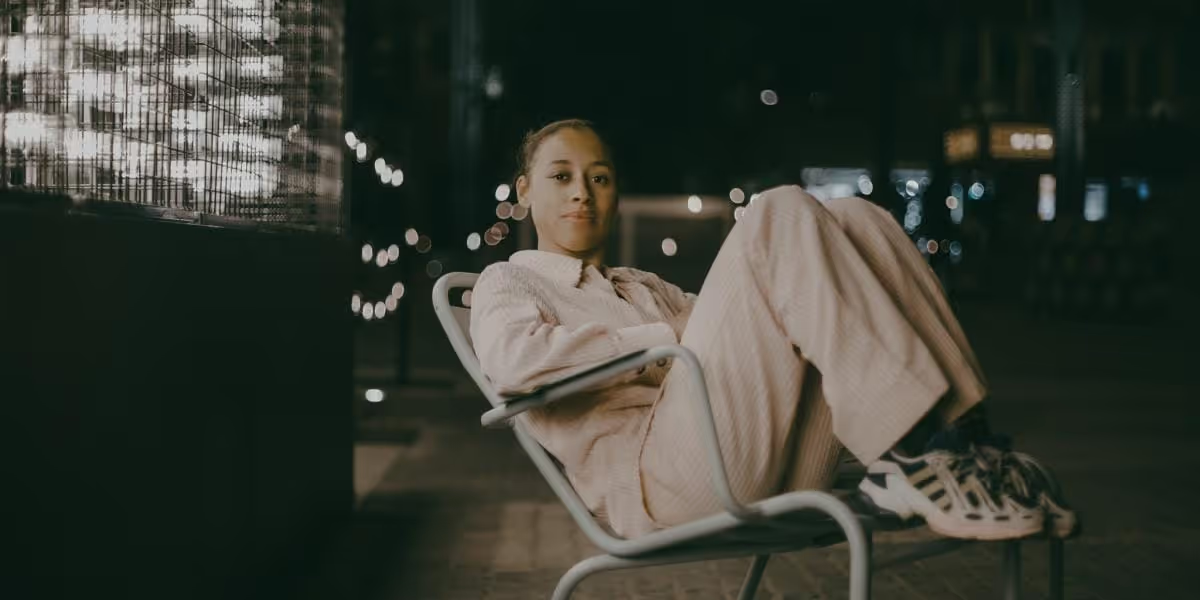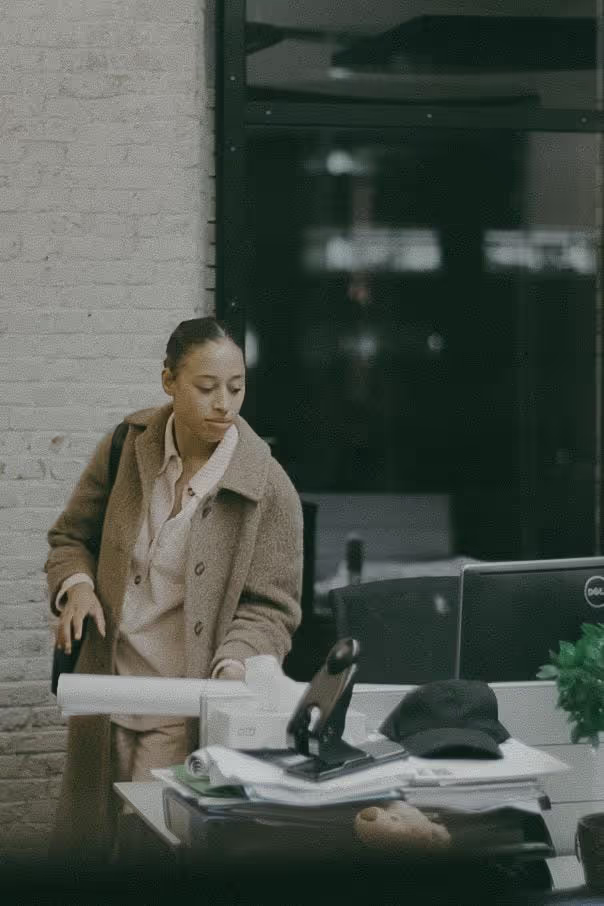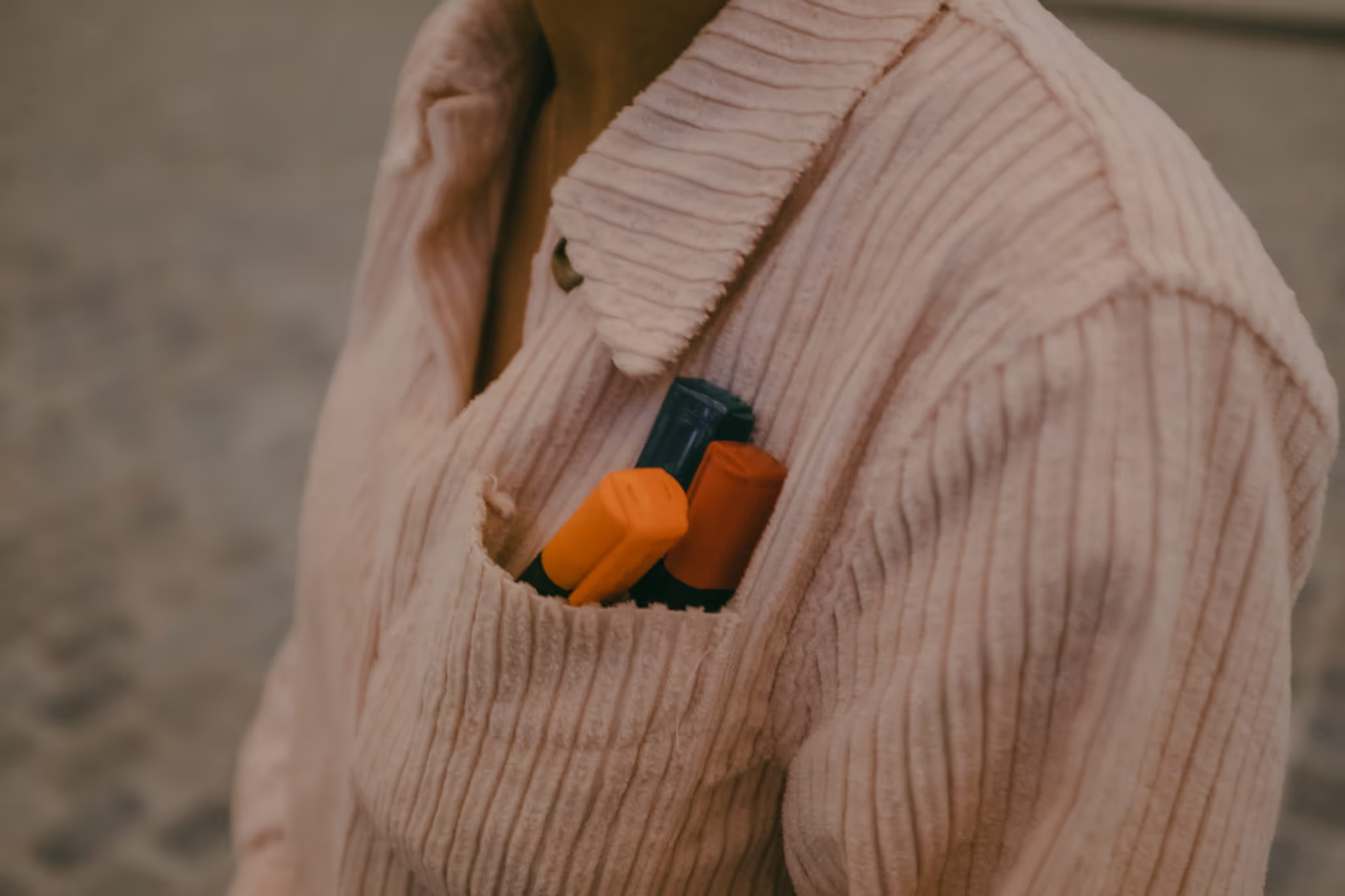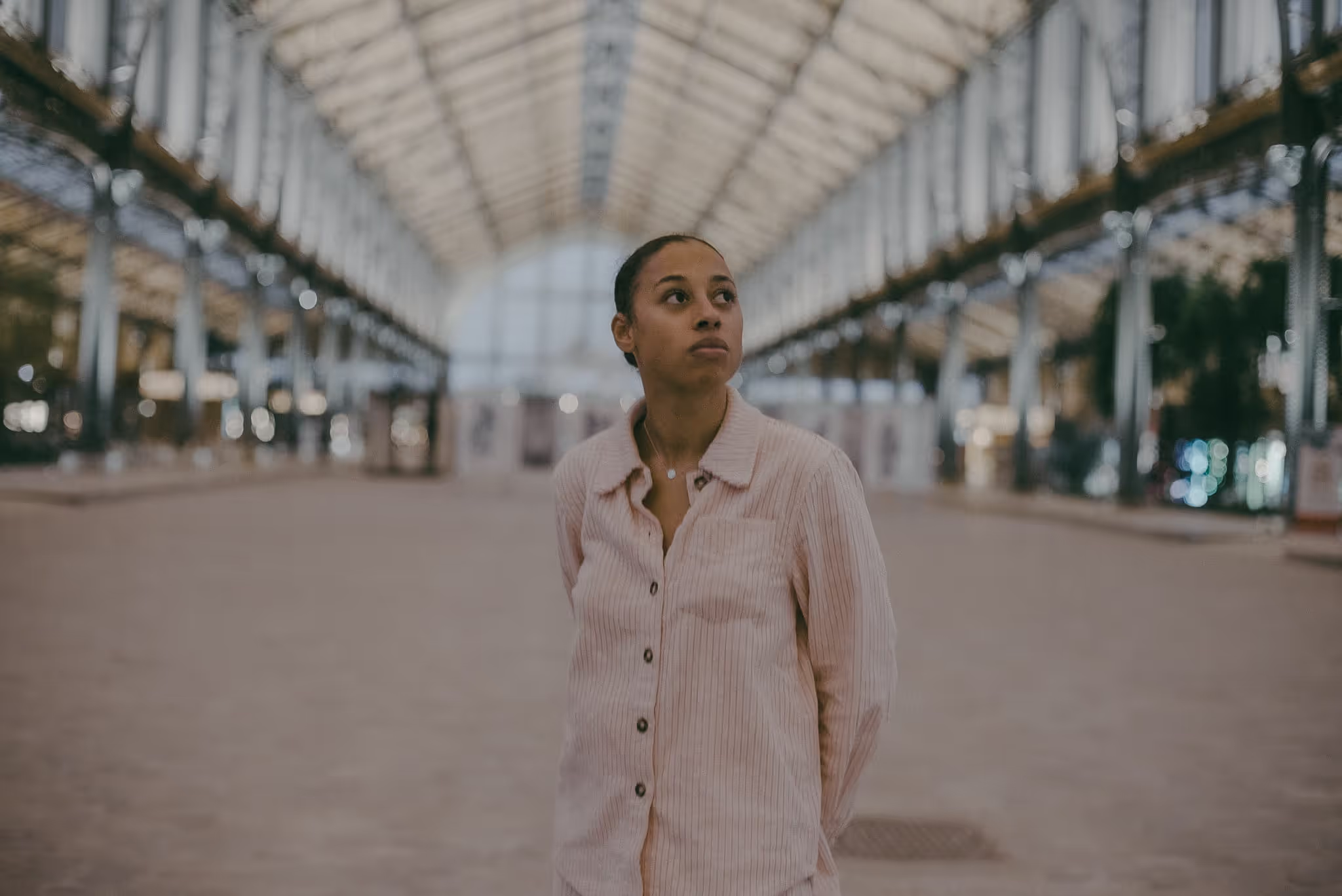





Text by Soraya Candido
Video & photo by Robin Stevens
Keytrade and Horst share DIY entrepreneurship as a common denominator. With ‘Their Way’ they inspire their shared philosophy through a content series. ‘Their Way’ offers the stories of DIY entrepreneurs at the forefront of art, architecture and music. We delve into the messy, yet inspiring and insightful process of entrepreneurship. We celebrate and feature compelling stories, challenging initiatives and examples of integrity from around the world.
Horst sat down with Nina Maat, founder of Antwerp Circular and advocate of a circular economy. Driven by science and art, Antwerp Circular organizes events to make sustainability tangible for a broad audience. Nina started at the age of 19 with clothes exchanges. First at the fashion museum of Antwerp, followed by the Museum of Contemporary Art Antwerp and JJ House. Today, five years later, we reflect on the journey she has made and glimpse into the future.
Horst: Can you elaborate on the concept of a circular economy for us?
Nina: When we think of a circular economy often recycling first comes to mind, but it is much more than that. A circular economy implies a new way of living both on a personal and social level. For me, ecodesign is key. Products and services need to be designed with a minimal environmental impact in mind, in order to protect the planet and combat global warming. Ecodesign is by nature a logical choice. All over the world plants and animals are teaching us how to organize ourselves in a more sustainable way. The stripes on zebras, for example, create a microclimate so that the animals can regulate their temperature. Our planet is the perfect example of a smart design.
During my studies, I delved into everything related to the circular economy. First through books, later as an intern at OVAM, Flanders Circular and Bond Beter Leefmilieu. For me, a circular economy as a concept is more accessible than 'sustainability', because it is easier to apply.
Horst: You introduced thousands of visitors to the value of second-hand clothes through clothing exchanges. Can you tell us a bit more about Antwerp Circular?
Nina: In my quest to pull the circular economy out of its woolly image, I came across fashion.
Through clothing swaps, participants could exchange the clothes they were no longer wearing.
In this way the garments were given a new life, which is beneficial for the environment.
The selection of clothing included many high-quality labels and Belgian brands. Whether you are into fashion or not, everyone needs clothes and thus consciously or unconsciously invests in materials. With the clothing exchanges, I tried to illustrate the impact of the raw materials on our planet. Fashion is a good medium to tell a story.
Gradually I asked other sustainable entrepreneurs to join, such as design studio GLIMPS and Go as u.r brand. For the event tokens, I collaborated with B-Token who produce biodegradable tokens from potato peels. Today there are many sustainable initiatives but the translation to a broad audience is lacking. With Antwerp Circular I aim to make the concept of circular economy accessible to everyone, also for those who are less concerned with sustainability. I consider myself an enthusiast for the circular economy.
"With Antwerp Circular I aim to make the concept of circular economy accessible to everyone, also for those who are less concerned with sustainability. I consider myself an enthusiast for the circular economy.
"
Horst: You campaign for a sustainable world. Where does this drive come from?
Nina: As a child the WWF campaign with a lone polar bear left an enormous impression on me. My sense of justice to protect the planet, further reflected in my choice of study. Motivated to make an impact, I first studied political science and later on environmental science. A choice that was initially perceived by my parents as something for 'green people', and therefore not for me.
My studies gave me different insights into the world, but I remained unsatisfied. Antwerp Circular was born out of a need to do something tangible, at a time when there were no climate youth. I am pleased to see how climate awareness has grown over the years.
Horst: Who or what inspires you?
Nina: My fascination with nature is both my driver and inspiration. To me nature is so beautiful and magical. If you look at the structure of a pomegranate for example, you will discover pure perfection. Behind the smallest structures, lie the greatest wonders. With Antwerp Circular I aim to translate my adoration for nature into a public experience. Besides nature, I’m also inspired by art. Artists play an important role in society in reflecting on social trends and global challenges. I love the work of Thijs Bierstreke, who addresses various environmental and climate issues. With his Plastic Reflectic installation, he portrays the plastic pollution of the ocean. A great example of how the circular economy has entered the art world.
Science and art have always touched me. Somehow I regret that I am neither a scientist nor an artist, because both can have a huge impact on the world through their work. However I prefer to focus on the things I’m good at such as bringing people together with sustainable initiatives.

Horst: You founded Antwerp Circular at the age of 19, and combine your business with a full-time job. How do you manage this combination? Do you dream of one day being fully independent?
Nina: The combination with a full-time job is challenging, but Antwerp Circular feels more like a hobby than extra work. Whether I want to be fully self-employed in the future, I have not yet decided. To create change in the world, I believe it is important to also work within existing organisations, rather than to invent something new. Especially at a young age. In my current job at Syntra Brussels, I am responsible for the integration of circular economy knowledge in the students' curriculum. Some sectors such as the fashion industry or goldsmithing have already taken steps towards sustainability, others are still in the process of doing so. Through my job, I continue to learn a lot every day and can contribute to a sustainable society alongside Antwerp Circular.
"To create change in the world, I believe it is important to also work within existing organisations, rather than to invent something new. Especially at a young age."
Horst: Which lessons have you learned in the last five years? Does your young age give you an advantage?
Nina: I have learned a lot about the world, but also about myself. Three lessons I take with me are: daring to ask, standing my ground and negotiating better. I will also formalise projects sooner, so that promises and expectations are put on paper. For my first clothing exchange I relied on free services of people and organisations, which only works if you are a student. Today, I find it important that everyone is fairly compensated. In order to do this, I must also have the courage to ask a fair price myself.
It was not so much my young age, but my ignorance that helped me to launch Antwerp Circular. It's hard to be afraid of something you are unaware of. Today, I experience more stress as I’m more conscious of the workload of an event. More than before, I am now engaged with the strategy behind Antwerp Circular and I want to develop a long-term business. Furthermore, I take the time to thoroughly work out projects before taking action. As a matter of fact, Antwerp Circular has matured just like I did.
{{images-1}}
Horst: You were the face for an Eastpak campaign and recently also for Provamel. Which criteria do you follow when cooperating with large companies?
Nina: I always try to take a critical look at such collaborations: 'am I just a model or do I have a seat at the table’. If oil company Shell would ask me to model I would refuse. On the other hand, if they asked me to integrate a circular business model, I would agree.
I was recently asked to become the face of a new sustainable product. However, I still had some questions and requested a meeting to elaborate on my concerns. The company never replied, so I ceased to be interested in further cooperation.
Often it is also a question of finding the right remuneration in comparison with the work I put in. The revenue from such campaigns flows directly back to Antwerp Circular. In this way, financial resources are shifted from large companies to initiatives for the general public.
Horst: How do you perceive other movements such as body positivity or black lives matter? Do you see a role for yourself in these initiatives?
Nina: Initially I was less aware of other societal movements. Over the years I have learned that a circular economy is also a social economy, in which everyone should feel welcome. During the clothing exchanges of Antwerp Circular, I found it important that not only small or medium clothing sizes were represented. Integrating diverse audiences is something you have to work on proactively, and doesn't happen automatically by being a person of color yourself.
Today there is a stigma that a circular economy is reserved for a select elite group. Such divisions are unfortunate. I believe that everyone cares about the future of the planet, but not everyone has the time, motivation or resources to do something about it. With Circular Antwerp, I hope to reach a wide range of people rather than just the logical target groups. Not because it is obligatory, but because it goes without saying.
"Like science, art is able to move an audience. Art is therefore the perfect medium to address climate issues."

Horst: What does the future hold for you?
Nina: I had a two-year break because I wanted to grow as an entrepreneur. I paused online as well. Complex stories are hard to translate through a screen, where nuance is lacking. Social media has an impact, but making a difference in person suits me better.
For my next project, I'm going to use art as a medium. With Antwerp Circular, I would like to further advocate for a circular economy, similar to a pastor preaching with an enthusiastic gospel choir in the background. Like science, art is able to move an audience. Art is therefore the perfect medium to address climate issues.


